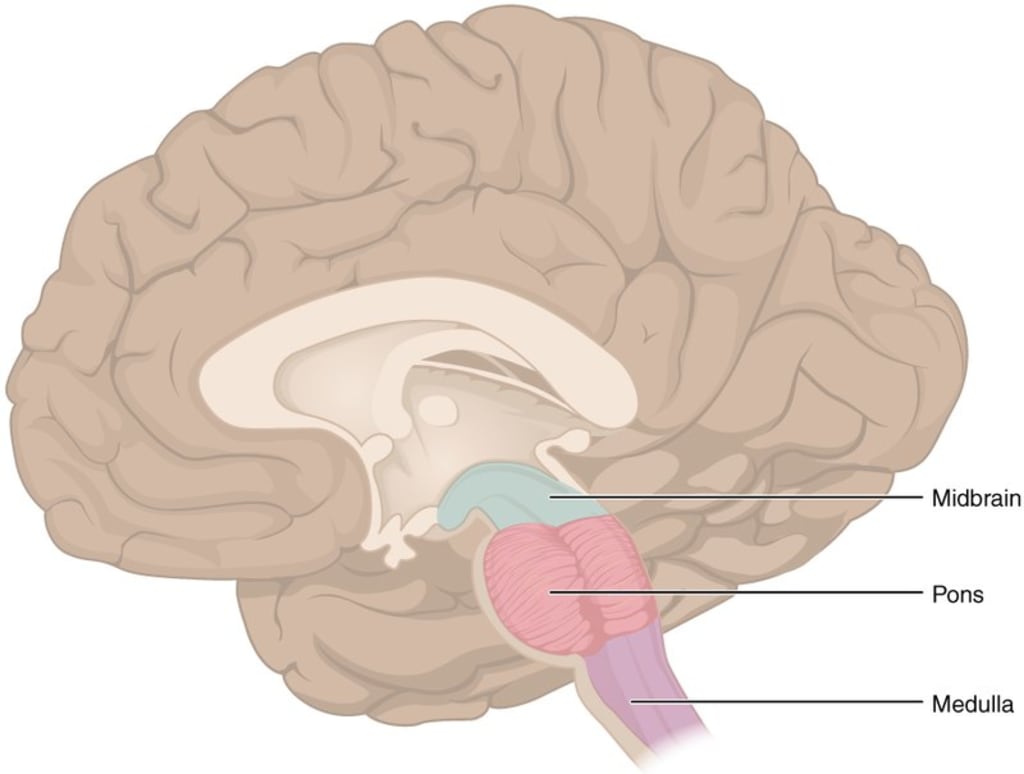Top 10 Fascinating Facts about Medulla Oblongata
Unveiling the Enigmatic Medulla Oblongata: Exploring the Intricate Functions and Vulnerabilities of the Brain's Vital Control Center

Introduction
The human brain is a remarkable organ, responsible for controlling our thoughts, emotions, and bodily functions. Within this intricate system lies the medulla oblongata, a critical region that connects the brain and spinal cord. Despite its small size, the medulla oblongata plays a vital role in regulating essential bodily functions, such as breathing, heart rate, and blood pressure. In this article, we will explore ten fascinating facts about the medulla oblongata, shedding light on this often overlooked but crucial part of the brain.
"Medulla oblongata is a crucial part of the brain that plays a part in emotional processing and the stress response"
Location and Structure
The medulla oblongata is located at the base of the brainstem, directly above the spinal cord. It is shaped like a cone, with a narrow upper end that connects to the pons and a broader lower end that leads to the spinal cord. This region measures approximately one inch in length and houses various nerve fibers and nuclei responsible for transmitting signals between the brain and the body.
Vital Autonomic Functions
One of the most crucial roles of the medulla oblongata is to regulate automatic or involuntary bodily functions. It controls vital processes such as breathing, heart rate, blood pressure, swallowing, and coughing. These functions are essential for our survival and are regulated by specialized groups of neurons within the medulla oblongata.
Connection to the Spinal Cord
The medulla oblongata serves as a bridge between the brain and the spinal cord, allowing communication between the two. Nerve fibers from the brain travel through the medulla oblongata and continue down the spinal cord, enabling the transmission of signals to and from the body.
Respiratory Control Center
Within the medulla oblongata lies the respiratory control center, a cluster of neurons responsible for regulating our breathing. It monitors the levels of carbon dioxide and oxygen in the bloodstream, adjusting our breathing rate and depth to maintain an optimal balance. Damage to this region can lead to respiratory problems or even respiratory failure.
Cardiovascular Control
The medulla oblongata also plays a crucial role in controlling our cardiovascular system. It regulates heart rate, blood pressure, and blood vessel diameter to ensure proper blood flow throughout the body. Through intricate feedback mechanisms, the medulla oblongata helps maintain stable cardiovascular function.
Reflex Actions
The medulla oblongata is involved in coordinating various reflex actions, allowing our bodies to respond quickly to certain stimuli. For example, when we touch a hot surface, sensory information is relayed to the medulla oblongata, which then sends a signal to withdraw our hand automatically. These reflex actions do not involve conscious thought and occur rapidly to protect us from harm.
Cranial Nerve Nuclei
Several cranial nerve nuclei are located within the medulla oblongata. Cranial nerves are responsible for controlling various functions of the head and neck, including facial expressions, chewing, swallowing, and sensation. These nuclei are essential for transmitting signals between the brain and the rest of the body.
Integration of Senses
The medulla oblongata integrates sensory information from different parts of the body, allowing us to perceive and respond to stimuli appropriately. It receives inputs from various sensory receptors and relays them to the appropriate regions of the brain for further processing. This integration is crucial for maintaining body balance, posture, and coordination.
Role in Emotions and Stress Response
Beyond its role in regulating physiological functions, the medulla oblongata also plays a part in emotional processing and the stress response. It receives inputs from higher brain regions involved in emotions and relays them to the body, triggering appropriate physical responses. This involvement in emotional processing demonstrates the complexity and interconnectedness of different brain regions.
Vulnerability and Protection
While the medulla oblongata is a crucial part of the brain, it is also vulnerable to damage. Trauma, strokes, or certain diseases can affect the medulla oblongata, disrupting its vital functions and leading to severe consequences. As such, protecting the brain, including the medulla oblongata, is of utmost importance for maintaining overall health and well-being.
Conclusion
The medulla oblongata may be small in size, but its significance in regulating essential bodily functions cannot be overstated. From controlling our breathing and heartbeat to integrating sensory information and coordinating reflex actions, the medulla oblongata is truly a remarkable region of the brain. Understanding its role and appreciating its intricate workings can help us recognize the complexity of the human brain and the delicate balance required to maintain optimal health.
About the Creator
Enjoyed the story? Support the Creator.
Subscribe for free to receive all their stories in your feed.





Comments
There are no comments for this story
Be the first to respond and start the conversation.